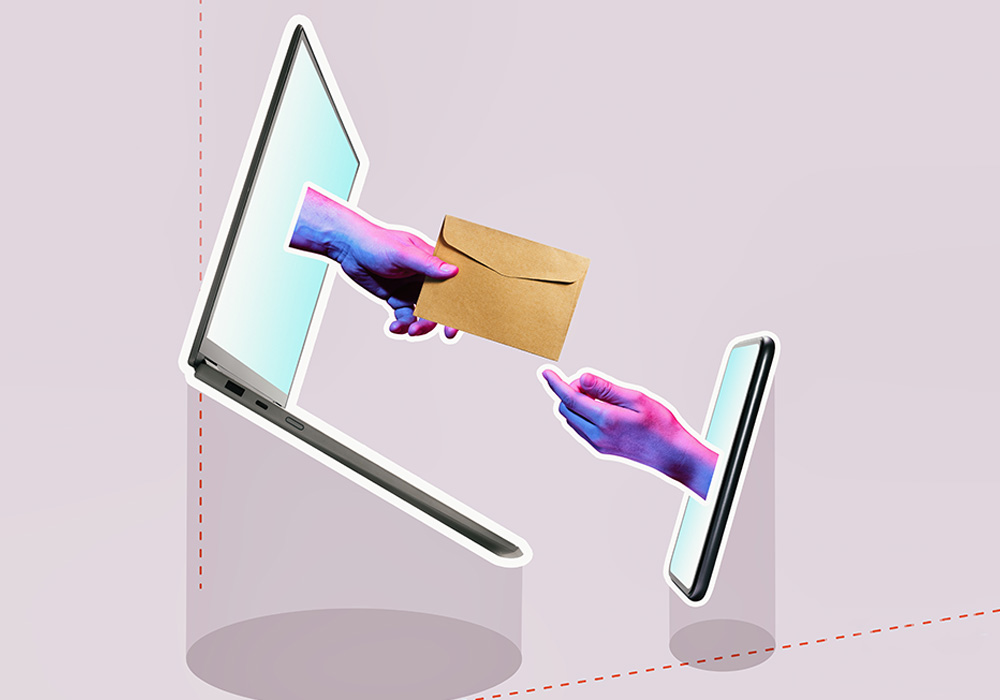“In the face of digital hyperconnectivity, new strategies should be created to protect your time and your family”.
Among the reps, the opposite was true. There was never a clear interpretation of why the company provided them with a Blackberry. This lack of interpretation led to heterogeneity in practices, and this diversity in usage did not generate a clear expectation of constant connectivity.
It was this lack of expectation that allowed reps to use the Blackberry when they really needed it, seeing it as an opportunity to answer emails on the go, saving time in front of the PC.
Thus, while the lawyers went from initial joy to unease, the commercials went from a certain repudiation to a good reception within a couple of years.
How digital hyperconnectivity affects our professional performance
According to Mazmanian, four elements accounted for this reversal in the perception of email use on mobile phones:
Identity: Lawyers’ mission is to support their internal clients. And email is the main channel through which their service is delivered. Therefore, wanting to be good professionals “forced” them to check their email and “take advantage” of the constant digital hyper-connectivity of their new devices. A topic we address in this article.
In the case of salespeople, email is not the main channel to be seen as a good salesperson. Sales are made by building a relationship of trust with the customer, and this is achieved through visits, not email. Therefore, the advent of email on mobile devices did not overly transform the way they work.
Materiality: Mazmanian also detected that the lawyers embraced the physical, functional and symbolic aspects of the Blackberrys. They wore the devices slung on their belts, projecting themselves as organizational individuals. In contrast, salespeople dressed in jeans, hiding their Blackberries in their pockets, or travel bags, since such devices didn’t represent a symbolic aspect of their work for them.
Vulnerability: Lawyers were the first to make a critical exercise to avoid addictive forms of work, but their structural position in the organisation contributed to undermine this initial position and left them vulnerable to internal and external pressures. They were aware that they were part of a supra-managerial function and that they shouldn’t be the ones to slow down the flow of processes.
Colleagues constantly sent them queries, vice presidents wrote to them on weekends, international colleagues contacted them from other time zones, increasing their vulnerability. Their expectations changed in a short time, and they ended up being subject to social pressures and the expectations of others.
The opposite was true of the salespeople, whose structural position limited their vulnerability to social pressures. They were aware that they brought value to the organisation by selling or, as they put it, “making their numbers”, and if they were asked for things by mail, they were aware that they’d probably not lose a sale by answering an email.
Visibility: Lawyers were very often copied, along with their superiors, on many different issues. They, at the same time, also copied (cc) others to speed up projects (although perhaps so much copying has the opposite effect), generating a new culture of who, when and how quickly emails are answered, forcing lawyers to always be “visible”.
This tendency to carbon copy in e-mails didn’t happen among the commercials. And it is precisely this lack of need for visibility that allowed the commercials to use their Blackberrys freely to a certain extent.
“There is a new culture of who, when and how quickly emails are answered: the need for visibility”.
4 questions to assess the effect of digital hyperconnectivity
In short, Mazmanian’s study, which aims to understand how different occupations are adapting to new communication technologies, and specifically to email on mobile devices, is entirely topical.
The study reveals that low vulnerability and visibility among sales reps are the enablers of heterogeneous practices in the use of mobile devices that allow for completely free use.
On the contrary, high vulnerability, coupled with high visibility, along with email being the channel through which lawyers served their clients, reversed their initial perceptions, to the point of changing their character.
This original study leaves us with interesting questions that any contemporary organisation wishing to care for its corporate society should ask itself:
- Which occupations in our organisation are most affected by constant connectivity?
- Which occupations in our organisation have email as their “main channel” to support or perform their functions? (As would be the case for lawyers, and not for sales people)
- Which occupations are most vulnerable to internal and external pressures within my organisation?
- How does each occupation add value to the organisation?
Asking questions is a first exercise in order to unveil more complex realities than those appearing at first glance. Constant connectivity is a new reality with benefits and detriments that’s here to stay. Organisations, as social actors, cannot refrain from reflecting on it and protecting their corporate society from the most pernicious effects of its abuse.
References
Mazmanian, M. (2013). Avoiding the trap of constant connectivity: When congruent frames allow for heterogeneous practices. Academy of Management journal, 56(5), 1225-1250.
https://people.acciona.com/es/innovacion-y-tecnologia/innovacion-empresarial-tecnologia-filosofia/

